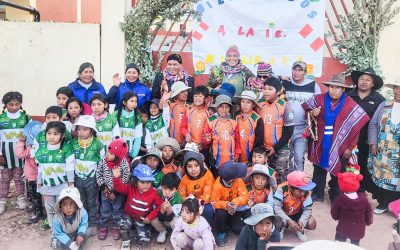To twist the words of Kermit the Frog, it’s not easy being a teen. Especially not in 2022!
When you think about it, at the upper end of the scale (those in their final year of their teens) are young adults born in 2003. It was the year the War in Iraq began, resulting in nationwide protesting. It was also the year Cyclone Beni caused widespread flooding an damage in south-east Queensland, the Brisbane Lions won their third consecutive AFL premiership and Australia hosted the Rugby World Cup.
Most definitely, anyone younger knows their way around a smartphone or tablet. Information is much easier to share. As a result, today’s teenagers are more socially conscious than the generations before them. They are also more outspoken.
But what are the biggest social issues today’s teens are dealing with?
Mental health
Health and wellbeing issues of note, but for more than 40 per cent of today’s teens mental health is something they are very or extremely concerned about. According to the Youth Survey conducted by Mission Australia, at least 35 per cent of young people feel mental health is an important issue nationwide. In Queensland, that number is 43.6 per cent. The top three areas for today’s teens include coping with stress, mental health, and school or study problems.
Teenagers in their final years of secondary education have been impacted by COVID-19. The pandemic has impacted their education, their mental health and their ability to participate in activities. Parents are seeing their children heavily burdened, unable to keep pace with an overprescribed and impossible curriculum. There is burnout, breakdown and fear of failure.
The collapse of mental health services across Australia has left schools with a heavy load to carry. It’s something author Rebecca Sparrow and journalist Madonna King are acutely aware of. Earlier this year, the pair put together a website to collect the stories and experiences of senior students, parents and teachers, which were passed on to each of the state assessment authorities. The diversity of responses from teenagers is eye-opening.
Social media
One of the most interesting social issues teenagers deal with every day is the very medium by which they become aware of social issues — social media. Among the numerous problems with social media are that it is easy to access, it is addictive and it is designed to stir up extreme feelings or emotions in order to engage its audience.
Teens who show interest in or support for things on social media can find themselves excluded by their peers. They can also find themselves on the outer when they don’t show an interest or support for something. Something as simple as not reacting quickly enough can have devastating consequences for a young person who is just trying to find their way in the world.
Organisations such as headspace offer support to young people using social media. However, headspace CEO Jason Trethowan says the platforms are engineered to keep people online and teens can’t be solely responsible for their own personal use.
“It’s clear from the research that social media is something young people feel is putting more and more pressure on them,” Mr Trethowan says. “Spending too long on social media is associated with higher levels of mental health problems, including anxiety, depression and psychological distress.”
Other impacts of social media include cyberbullying, sleep problems and body image concerns.
“There needs to be greater emphasis from parent companies of these platforms to ensure young people have safe and healthy experiences,” he says.
The environment
At least 38 per cent of today’s teenagers identify the environment as an important issue. According to Mission Australia, that number has more than doubled since 2012, when it was regarded as a social issue by 18 per cent of young people. At the heart of their concern is the lack of action on climate change in Australia.
While it’s important to remember scientists focus on the evidence, not on opinions, it’s hard to ignore the evidence on climate change. There are large wildfires, intense heatwaves and catastrophic floods. NASA Global Climate Change recently reports human activities, such as the burning of fossil fuels, are warming the Earth’s surface and its ocean basins. Today’s teens want action.
Identity, equality and discrimination
From the Youth Survey, one third of teens regard gender identity, equality and discrimination as an important issue. With far more gender diverse young people, more are reporting being treated unfairly. According to Kids Helpline, 80 per cent of young LGBTIQA+ people experience bullying and discrimination within their school.
Unfair treatment due to race or cultural background is also an issue, especially for Aboriginal and Torres Strait Islander teens.
Teens feel increasing pressure from their peers, parents and society to conform to conflicting expectations. A fear of discrimination or abuse because of their sexuality or identity means some teenagers are hiding their true self from their peers and families.
When teens feel they don’t fit in or belong, they can be left feeling isolated and disconnected. A number of today’s television shows normalise bullying, aggressive and violent behaviour and rule-breaking. Teens are told they need to look a certain way, dress a certain way and behave a certain way. The feeling of not belonging and being rejected are things that affect many teens.
Risky behaviour
Sexual activity and alcohol and drug use are all risky taking behaviours affecting teenagers. Testing boundaries and taking some risks is a healthy way for kids to learn their limits.
According to a national survey conducted by La Trobe University, just under half of Australian teens in Years 10-12 have had sex. While they know more about sexually transmitted diseases, there is still room to improve when it comes to condom use and STI testing. More teens are turning to the internet to find their sexual health information. It’s yet another reminder that parents need to be having regular conversations with their children about sex, even if they don’t think their child is having it.
Teenagers aged between 14 and 19 are often cited as being particularly vulnerable to the negative effects of alcohol, tobacco and illicit drugs. The Australian Institute of Health and Welfare says 30 per cent of teens are drinking alcohol at levels that put them at risk of harm at least once a month.
Smoking cigarettes is not as prevalent among today’s teenagers, but there are increasing numbers of non-smoking teens taking up e-cigarettes. While engaging in illicit drug use is a social issue for teens aged 18-19. Marijuana, ecstasy and cocaine are the most common illicit drugs for teenagers, regardless of age.
Helping teens tackle social issues
Life for today’s teens is often lived at a superficial level. While some parents are engaged in their teen’s life, others are not. The perception that because your child has reached their teens they no longer require your input is flawed. If the past two years has shown us anything, it’s that our teens need their parents more than ever. Smartphones, social media, gadgets and gizmos cannot give your teen the nurturing they need.
It’s important that parents build strong lines of communication with their children. This will help your child see you as an ally instead of an enemy. Positive communication is crucial. Leave the commands and ‘I told you so…’ at the door. Have open an honest discussions about housework, homework, driving, dating, sex, drugs, alcohol and social media use. Ackowledge you don’t always have all the answers and work with your child to find them when they are needed.
Parents need to look for signs of stress, anxiety and lack of concentration. Be aware of poor eating habits, personal hygiene, sleep disruptions and declining interest in social activities. Act quickly.
Most importantly, let your teen know you care.
You might also like…
Teen Burnout: Pay attention to these warning signs
Feed, play, listen, love: 4 Tips to help raise a happy teen




